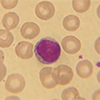Phosphate (Urine)
Sample Preparation
Turnaround Time
1 daySample Processing In Laboratory
UsualSample Stability
UsualGeneral Information
Urinary phosphate analysis is useful in the differential diagnosis of hypo and hyperphosphataemia.
Hypophosphataemia with a low urinary excretion (i.e. <3 mmol="" 24h="" of="" phosphate="" is="" most="" likely="" due="" to="" decreased="" intake="" increased="" cell="" uptake="" or="" loss="" from="" the="" gut="" a="" high="" urinary="" excretion="" i="" e="">3 mmol/24hr> is associated with renal loss and together with a high plasma calcium concentration can be attributed to primary hyperparathyroidism or malignancy. A high urinary excretion with a normal or low plasma calcium implies secondary hyperparathyroidism, vitamin D deficiency, Fanconi syndrome, hypomagnesaemia, diuretic therapy or oncogenic osteomalacia.
Hyperphosphataemia with a urinary excretion of <50 mmol="" 24h="" is="" suggestive="" of="" hypoparathyroidism="" whereas="" a="" level="">50 mmol/24h suggests increased intake, cell destruction or bone malignancy. Other causes of hyperphosphataemia (e.g. renal failure, vitamin D toxicity, DKA & lactic acidosis) may be exluded using plasma creatinine or calcium measurements.
Patient Preparation
None
Reference Range
15-50 mmol/24hr
Source of Reference Range
Pathology Harmony recommendationsSpecifications
- EQA Status: NEQAS
- EQAS Scheme: Yes








